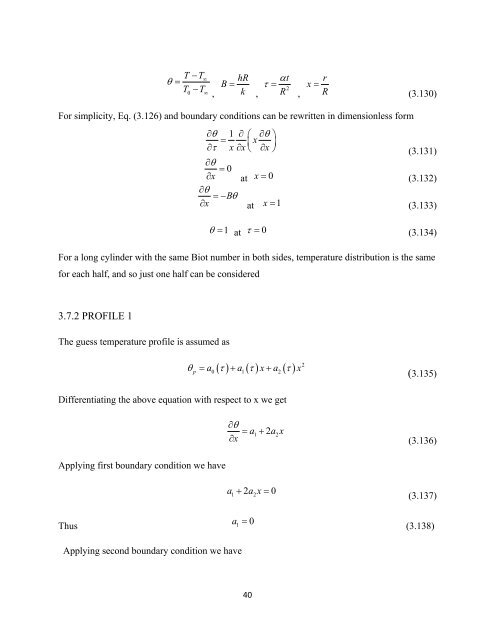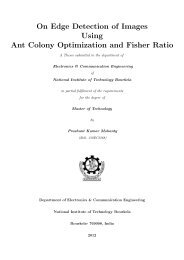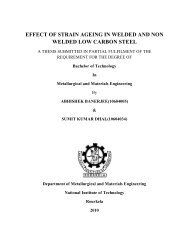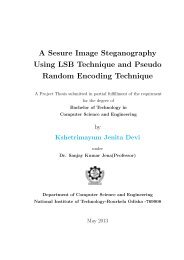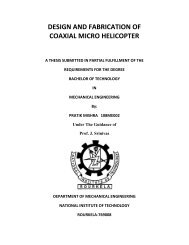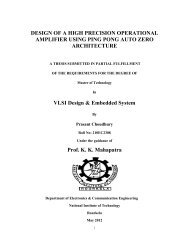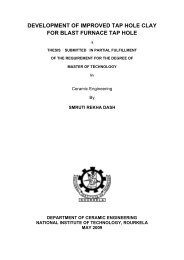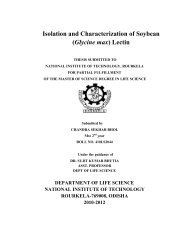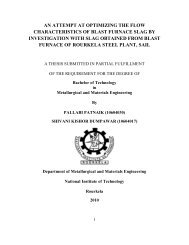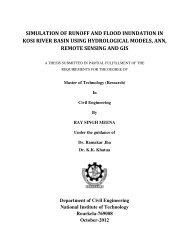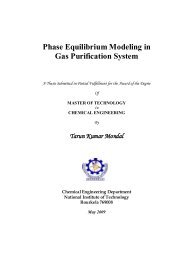analysis of transient heat conduction in different geometries - ethesis ...
analysis of transient heat conduction in different geometries - ethesis ...
analysis of transient heat conduction in different geometries - ethesis ...
You also want an ePaper? Increase the reach of your titles
YUMPU automatically turns print PDFs into web optimized ePapers that Google loves.
T −T<br />
θ =<br />
T −T<br />
0<br />
∞<br />
∞<br />
,<br />
hR<br />
B =<br />
k<br />
40<br />
,<br />
αt<br />
τ = 2<br />
R<br />
,<br />
r<br />
x =<br />
R<br />
For simplicity, Eq. (3.126) and boundary conditions can be rewritten <strong>in</strong> dimensionless form<br />
(3.130)<br />
∂θ 1 ∂ ⎛ ∂θ⎞<br />
= ⎜x⎟ ∂τ x ∂x⎝ ∂x<br />
⎠ (3.131)<br />
∂ θ<br />
= 0<br />
∂ x at x = 0<br />
(3.132)<br />
∂ θ<br />
= −Bθ<br />
∂ x at x = 1<br />
(3.133)<br />
θ = 1 at τ = 0<br />
(3.134)<br />
For a long cyl<strong>in</strong>der with the same Biot number <strong>in</strong> both sides, temperature distribution is the same<br />
for each half, and so just one half can be considered<br />
3.7.2 PROFILE 1<br />
The guess temperature pr<strong>of</strong>ile is assumed as<br />
( ) ( ) ( ) 2<br />
θ τ τ τ<br />
p = a0 + a1 x+ a2 x<br />
Differentiat<strong>in</strong>g the above equation with respect to x we get<br />
Apply<strong>in</strong>g first boundary condition we have<br />
(3.135)<br />
∂ θ<br />
= a1+ 2a2x<br />
∂ x<br />
(3.136)<br />
a1+ 2a2x= 0<br />
(3.137)<br />
Thus<br />
a 1 = 0<br />
(3.138)<br />
Apply<strong>in</strong>g second boundary condition we have


